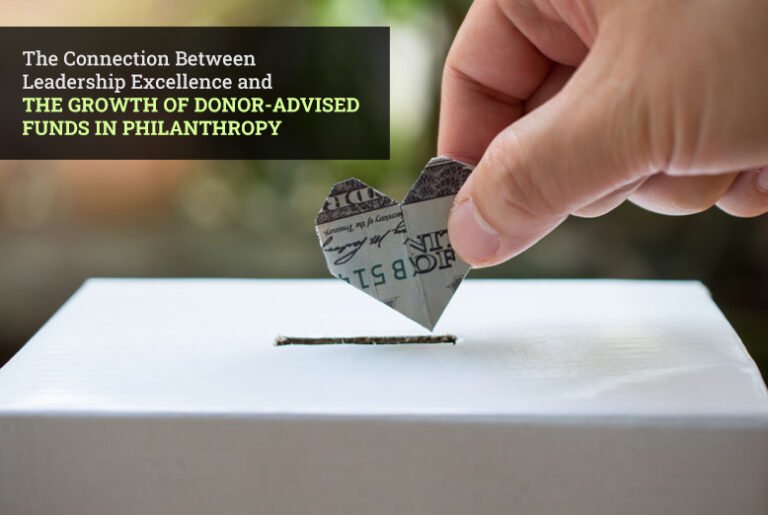Key Takeaways
- Leadership excellence is vital to the responsible growth and long-term impact of donor-advised funds.
- Traits like vision, transparency, and adaptability build trust and drive donor engagement.
- Innovation, ethics, and data-driven strategies will continue to shape the expansion of DAFs.
Examining Philanthropy’s New Frontier
Philanthropy is undergoing a period of notable transformation, as new tools and approaches empower donors to make more strategic and intentional choices with their generosity. Among these tools, donor-advised funds (DAFs) have emerged as a favored vehicle for charitable giving, offering unique advantages in flexibility and impact. DAFs allow individuals and organizations to donate assets, receive immediate tax benefits, and then recommend grants to charities over time, thereby enhancing both control and satisfaction for donors. This kind of innovation doesn’t happen on its own. The foundation beneath the growth of DAFs is strong, values-driven leadership. Figures such as Mark Patrick illustrate how a blend of experience, vision, and commitment to integrity within philanthropic organizations quietly fuels the responsible expansion of DAFs. Their leadership helps shape strategies, builds organizational credibility, and keeps donors engaged throughout the philanthropic process.
The rapid ascent of DAFs in the philanthropic world prompts a closer examination of what sets them apart and why savvy, ethical leadership is crucial to harness their full potential. Every aspect, from donor engagement to innovation, can be traced back to the caliber of leadership overseeing these funds. As the philanthropic field strives to meet evolving global needs, the interplay between leadership and effective giving is more relevant than ever.
What Sets Donor-Advised Funds Apart?
The distinct nature of DAFs lies in their adaptability and donor control. Instead of making a single donation and stepping away, DAF contributors can recommend their preferred grant recipients over the course of months or even years, providing an ongoing sense of involvement. This approach appeals to donors who seek both meaningful impact and financial efficiency. Unlike private foundations, DAFs put less administrative strain on donors, making high-impact giving more accessible. Busy professionals, families seeking to instill philanthropic values, and corporations all find DAFs an attractive option as a result.
The numbers affirm growing popularity. The National Philanthropic Trust shares that contributions to DAFs hit an all-time high of over $72 billion in 2022. At the same time, grantmaking from DAFs to charities soared past $52 billion. For perspective, DAFs now account for an increasingly large share of all individual giving in the United States. Such remarkable growth doesn’t just reflect financial trends; it highlights how responsive and visionary leadership creates systems that make giving easier, more transparent, and more adaptable to changing circumstances.
The Importance of Leadership in Managing DAFs
Effective leadership is the anchor for every thriving DAF program. Leaders in DAF-sponsoring organizations guide operational processes, establish clear lines of communication with donors, and ensure that the fund’s mission remains front and center. Their decisions impact everything from investment strategies to the types of charities eligible for grants. When leaders embody empathy and accountability, they set a positive tone that permeates the culture and practices of their team.
Leadership was tested globally during recent crises, such as the COVID-19 pandemic, when communities turned to philanthropy for urgent relief. In such times, it was often the adaptability of experienced DAF leaders that made a difference. By moving quickly, simplifying grant recommendations, and keeping donors informed with real-time updates, these leaders provided timely aid where it mattered most. These examples demonstrate that leadership is not just about management—it’s about agility, setting priorities, and steering resources during unpredictable moments.
Traits That Define Leadership Excellence in Philanthropy
- Vision: The most influential leaders guide organizations with a long-term outlook, proactively addressing today’s needs while preparing for tomorrow’s challenges.
- Transparency: Building trust requires open communication with donors, partners, and recipients. Responsible leaders prioritize regular reporting and open dialogue.
- Collaboration: By forming meaningful alliances and partnerships, leaders broaden the scope and depth of their organization’s impact, unlocking shared knowledge and resources.
- Adaptability: With the philanthropic landscape shifting rapidly due to social, technological, and economic changes, quick-thinking leaders help organizations remain flexible and responsive.
A 2021 survey of top-performing charitable organizations revealed that nearly 9 in 10 attributed sustained success to a culture of inclusive, transparent, and collaborative leadership. This underscores that skills beyond financial acumen are required to guide today’s complex philanthropic initiatives toward lasting results.
How Leadership Drives Donor Engagement
Engaged donors are the lifeblood of philanthropic progress. Leadership is crucial in cultivating this relationship, offering not just transactional moments but ongoing value and partnership. Organizations build robust donor engagement by maintaining regular, transparent updates on the real-world impact of their grants. Frequent communication—through progress reports, events, or digital platforms—makes donors feel genuinely connected to the causes they support. This isn’t just good stewardship; it creates a virtuous cycle of giving, where donors feel inspired to contribute more.
Evidence supports this finding: research from the Lilly Family School of Philanthropy revealed that nearly 44% of DAF users increased their contributions after receiving detailed, authentic feedback from fund managers on the positive effects of grants. Such data-driven results underscore the importance of leadership’s commitment to effective communication and relationship-building, which in turn leads to higher donor satisfaction and loyalty.
Ethics, Compliance, and Accountability in DAF Leadership
With opportunity comes responsibility. DAF leaders must enforce rigorous compliance standards in accordance with IRS regulations and best practices for nonprofit governance. Detailed policies on grant vetting, impact documentation, and routine audits are essential for ensuring safe and responsible giving. An unwavering commitment to ethical practices also helps organizations fend off mission drift or any risk of misuse.
When donors see consistent transparency and robust ethical standards, their confidence in an organization—and by extension, their willingness to give—increases. Leadership’s vigilance in these areas builds a positive reputation for the organization, supporting both long-term growth and sustained community trust.
Future Growth: The Path Ahead
DAFs are at a pivotal point. Industry experts agree that their growth trajectory will closely follow the quality of leadership at the helm of sponsoring organizations. As donors demand more personalization and measurable impact, leaders must continue evolving, embracing lifelong learning, networking, and creative problem-solving.
The most enduringly successful DAF programs are those led by individuals and teams dedicated to ongoing education, strategic adaptability, and ethical rigor. This commitment to growth will keep DAFs relevant and practical vehicles for philanthropic giving in an ever-changing world, ensuring that future generations benefit from today’s forward-thinking leadership.
Also Read: Mid Cap Mutual Funds: Meaning, Benefits & Risks You Must Know!



